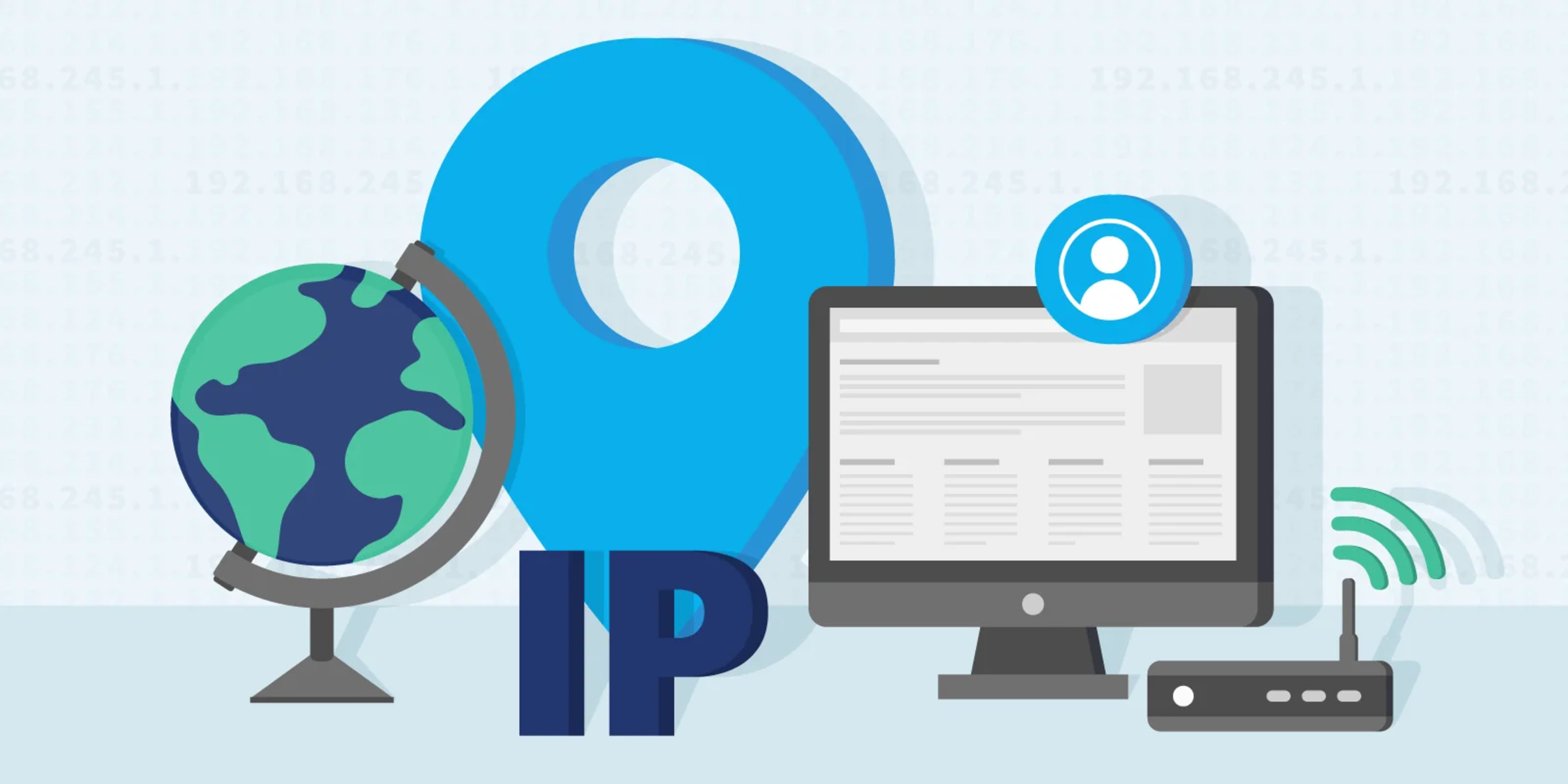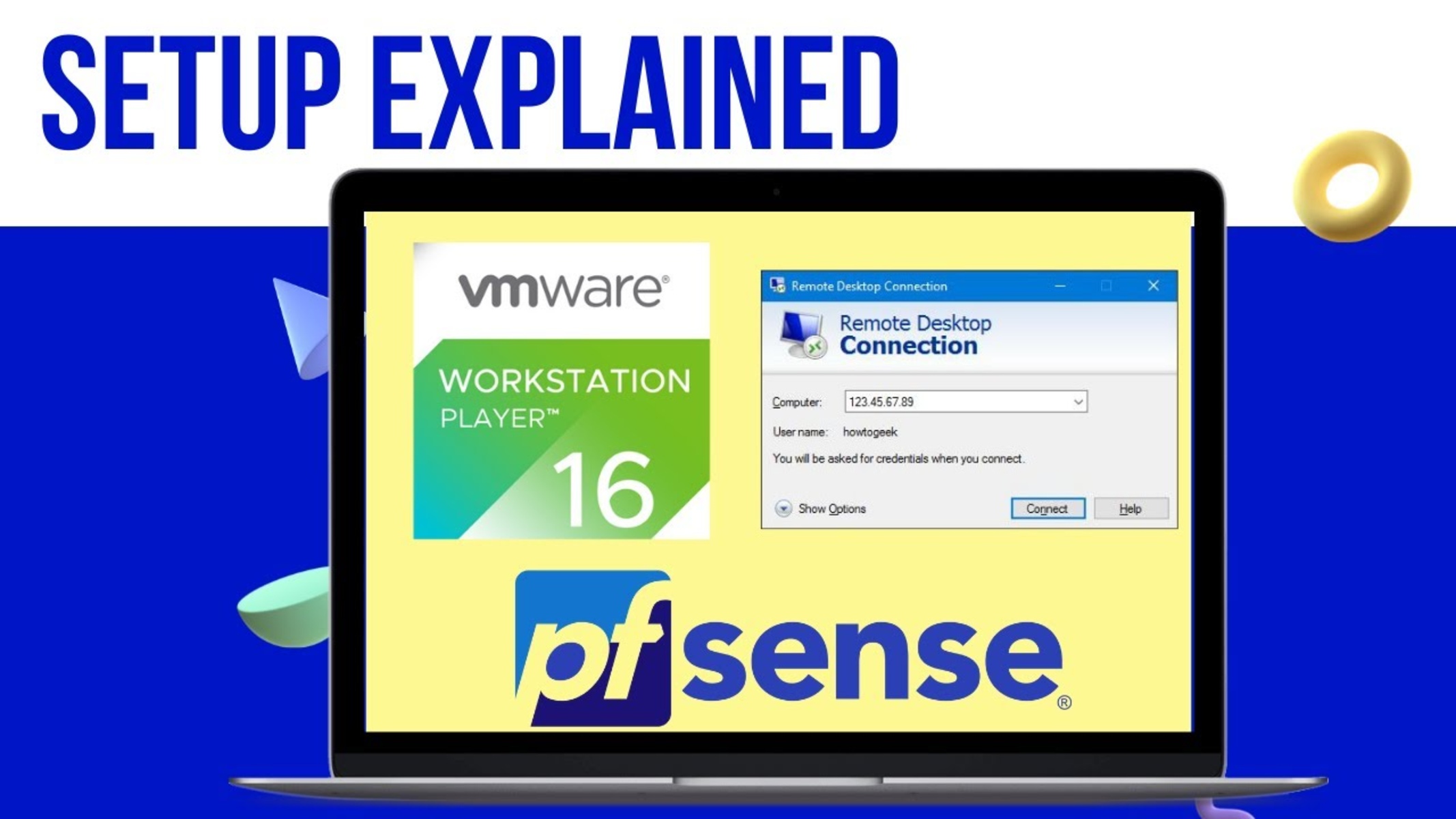Introduction
An IP address is a unique numerical label assigned to each device connected to a computer network that uses the Internet Protocol for communication. It serves as an identifier for devices such as computers, smartphones, tablets, and servers, allowing them to communicate with each other over the internet.
In a computer network, there are two types of IP addresses: dynamic and static. A dynamic IP address is automatically assigned to a device by a Dynamic Host Configuration Protocol (DHCP) server, while a static IP address is manually configured and remains the same over time.
When a workstation is connected to a network, it needs to obtain an IP address in order to communicate with other devices on the network and access the internet. This process involves a series of steps that the workstation goes through to acquire an IP address.
In this article, we will explore how a workstation gets an IP address and the role of DHCP servers in this process. Understanding this process will provide insights into how devices connect to networks and facilitate smooth communication and data transmission.
IP Addresses
An IP address, short for Internet Protocol address, is a unique numerical label assigned to each device connected to a computer network. It serves as a digital identifier, enabling devices to communicate with each other over IP-based networks like the internet.
An IP address consists of a series of four numbers separated by periods, such as 192.168.0.1. Each number can range from 0 to 255, creating a total of approximately 4.3 billion possible unique IP addresses. However, due to the rapid growth of internet-connected devices, the available pool of IP addresses has become limited.
There are two versions of IP addresses in use: IPv4 (Internet Protocol version 4) and IPv6 (Internet Protocol version 6). IPv4 is the most common and widely used version, utilizing 32-bit addresses. IPv6 was introduced to address the depletion of IPv4 addresses and uses 128-bit addresses, providing a significantly larger address space.
IP addresses play a vital role in identifying and routing data packets across networks. They allow devices to establish connections, transmit and receive data, and enable seamless communication on the internet. Without IP addresses, devices would not be able to locate and interact with each other on a network.
It’s important to note that IP addresses can be categorized into two types: public and private. Public IP addresses are globally unique and are assigned by Internet Service Providers (ISPs). These addresses are visible to other devices on the internet and allow for direct communication.
On the other hand, private IP addresses are used within private networks, such as local area networks (LANs) or home networks. These addresses are not directly accessible from the internet and are reserved for internal use. They enable devices within the same network to communicate with each other.
Overall, IP addresses are essential components of modern networking, enabling devices to communicate and share information across networks. Understanding the different types of IP addresses and how they function lays the foundation for comprehending how workstations obtain IP addresses on a network.
Types of IP Addresses
IP addresses can be classified into two main types: dynamic IP addresses and static IP addresses. Each type serves different purposes and has its own advantages and disadvantages.
1. Dynamic IP Address:
A dynamic IP address is automatically assigned to a device by a Dynamic Host Configuration Protocol (DHCP) server. These addresses are temporary and subject to change each time the device connects to the network.
The main advantage of dynamic IP addresses is that they are easily managed by DHCP servers, which can assign and reclaim addresses as needed. This dynamic allocation allows for efficient use of IP addresses, especially in larger networks where devices frequently come and go.
However, the dynamic nature of these addresses can also present challenges. Since the IP address can change, it can be difficult to maintain consistent connections to services or devices that rely on specific IP configurations. Additionally, dynamic IP addresses may require additional setup and configuration to ensure proper network connectivity when devices change their addresses.
A static IP address is manually configured for a device and remains fixed over time. Unlike dynamic IP addresses, static IP addresses do not change unless manually modified.
The primary advantage of static IP addresses is the ability to maintain consistent connections and configurations. This is particularly important for services that rely on a fixed address, such as servers, printers, or network devices, as it ensures they can always be reached using a specific IP address.
However, static IP addresses require manual configuration on each individual device, which can be time-consuming and cumbersome, especially in larger networks. Additionally, static IP addresses may not be as efficiently utilized, as they remain assigned even if the device is not actively connected to the network.
Choosing between dynamic and static IP addresses depends on the specific requirements of the network. Networks with a large number of devices or devices that frequently connect and disconnect from the network may benefit from dynamic IP addresses. On the other hand, networks that require consistent connections to specific devices or services may opt for static IP addresses.
Understanding the different types of IP addresses sets the stage for comprehending how workstations obtain their IP addresses on a network. In the next section, we will delve into the process of how a workstation acquires an IP address from a DHCP server.
Dynamic IP Address
A dynamic IP address is an IP address that is automatically assigned to a device by a Dynamic Host Configuration Protocol (DHCP) server. With dynamic IP addressing, devices on a network request and receive an IP address from the DHCP server whenever they connect to the network.
The dynamic allocation of IP addresses offers several advantages. Firstly, it simplifies network management by relieving network administrators of the task of manually assigning IP addresses to each device. DHCP servers can handle address allocation and management efficiently, allowing for easier scalability and administration in large networks with numerous devices.
Additionally, dynamic IP addresses promote better IP address utilization. Since IP addresses are only assigned to devices when they are actively connected to the network, the addresses are not wasted when devices are offline or disconnected. This makes dynamic IP addressing a more efficient use of available IP addresses compared to static IP addressing.
Another advantage of dynamic IP addresses is their flexibility. When devices request an IP address from the DHCP server, they can be assigned an available address from a pool of addresses. This dynamic assignment allows for devices to obtain different IP addresses each time they connect to the network. Fluctuations in IP addresses can provide a certain level of anonymity and security, making it more challenging for potential attackers to target specific devices based on their IP addresses.
However, there are also limitations and considerations when using dynamic IP addresses. Since IP addresses are subject to change each time a device connects to the network, services or applications that rely on a specific IP configuration may encounter connectivity issues. For example, if a device is running a web or email server that requires a consistent IP address to be accessible, a dynamic IP address may cause disruptions to these services.
In order to mitigate these potential issues, network administrators can implement techniques such as DHCP reservation, which assigns specific IP addresses to devices based on their MAC addresses. This allows certain devices to always receive the same IP address, combining the flexibility of dynamic IP addressing with the benefits of static IP addressing for critical devices.
Overall, dynamic IP addressing is a commonly used method for assigning IP addresses to devices on a network. It offers efficient address management, flexibility, and better utilization of available IP addresses. Understanding how workstations acquire IP addresses from DHCP servers is crucial in comprehending the networking process, which will be explored further in the subsequent sections.
Static IP Address
A static IP address is a manually configured IP address that remains fixed for a device on a network. Unlike dynamic IP addresses, which are assigned by a Dynamic Host Configuration Protocol (DHCP) server, static IP addresses are set directly on the device itself, typically through the device’s network settings.
One of the main advantages of using a static IP address is the ability to maintain consistent connections and configurations. When a device has a static IP address, other devices on the network can easily find it using its specific IP address. This is especially important for devices that provide services or host applications, such as servers or printers.
With a static IP address, services or applications that rely on specific IP configurations, such as port forwarding or virtual private networks (VPNs), can be easily set up and accessed. This ensures reliable connectivity to these services, as their IP addresses do not change periodically.
Static IP addresses are also useful in scenarios where devices need to be accessed remotely. For example, if a company has a remote office, a device in that office with a static IP address can be accessed reliably from the main office or other remote locations.
However, there are some considerations when using static IP addresses. First and foremost, manually assigning IP addresses can be time-consuming and require proper network configuration. In larger networks or environments with a high number of devices, managing and assigning static IP addresses can become complex and error-prone.
Another drawback of static IP addresses is their potential for inefficient use of available IP address space. Unlike dynamic IP addresses that are assigned only when devices are actively connected, static IP addresses remain assigned to devices even if they are not connected or offline. This can result in IP address wastage in situations where devices are frequently added or removed from the network.
It is also worth mentioning that setting up a static IP address requires careful consideration of network settings to avoid IP conflicts. If two devices are assigned the same static IP address, it can lead to network connectivity issues and disruptions.
Despite these considerations, static IP addressing remains a preferred choice in certain situations where consistent connectivity and specific IP configurations are crucial. Network administrators need to carefully assess their network requirements and consider the benefits and drawbacks of using static IP addresses.
In the next section, we will explore the role of a DHCP server in the process of how a workstation obtains an IP address dynamically.
DHCP Server
A DHCP server, or Dynamic Host Configuration Protocol server, plays a crucial role in dynamically assigning IP addresses to devices on a network. It automates the IP address configuration process, simplifying network management and ensuring efficient allocation of IP addresses.
When a device connects to a network, it sends a DHCP Discover message, seeking an IP address from the DHCP server. The DHCP server then responds with a DHCP Offer message, offering an available IP address along with additional configuration information, such as subnet mask, default gateway, and DNS server addresses.
The device then selects an IP address from the offered addresses and sends a DHCP Request message back to the server, indicating its acceptance of the offered IP address. Once the DHCP server receives the request, it sends a DHCP Acknowledge message, confirming the assignment of the IP address to the device.
In addition to assigning IP addresses, DHCP servers can also perform other important functions:
1. Lease Management: DHCP servers define lease duration, which determines how long a device can use the assigned IP address. After the lease expires, the device must renew the lease or request a new IP address. This mechanism allows the DHCP server to reclaim IP addresses that are no longer needed.
2. Configuration Options: DHCP servers provide additional configuration information to devices, such as subnet masks, default gateways, and DNS server addresses. These parameters are essential for proper network connectivity and enable devices to access other resources on the network and the internet.
3. DHCP Reservation: DHCP servers can reserve specific IP addresses for devices with known MAC addresses. This allows devices to receive the same IP address consistently, combining the flexibility of dynamic IP addresses with the benefits of static IP addresses for critical devices.
By centralizing IP address management and streamlining the configuration process, DHCP servers significantly reduce the administrative burden of assigning and managing IP addresses manually. They ensure that devices on the network have appropriate IP configurations, promoting efficient communication and seamless connectivity.
It’s important to note that DHCP servers can be configured and managed on various devices, such as routers, switches, or dedicated DHCP server software. Network administrators have the flexibility to choose the most suitable implementation based on the size and requirements of their network.
With an understanding of DHCP server functionality and its role in IP address assignment, we can now explore the step-by-step process of how a workstation obtains an IP address dynamically from a DHCP server on a network.
How the Workstation Gets an IP Address
When a workstation is connected to a network, it goes through a series of steps to obtain an IP address from a DHCP server dynamically. This process involves initializing the network interface, discovering the DHCP server, requesting an IP address, receiving and confirming the IP address, and updating the network configuration.
Step 1: Initializing the Network Interface: The workstation’s network interface card (NIC) initializes and prepares to communicate with the network. The NIC sends out a broadcast message, known as a DHCP Discover message, to discover available DHCP servers on the network.
Step 2: Discovering DHCP Server: The DHCP Discover message is broadcasted to the local network, and any DHCP server within the network receives the message. The DHCP servers respond to the workstation’s request with a DHCP Offer message, offering an available IP address along with the lease duration and additional configuration information.
Step 3: Requesting an IP Address: The workstation selects one of the offered IP addresses and sends a DHCP Request message to the DHCP server, indicating its acceptance of the offered IP address. This message notifies the DHCP server that the workstation wants to obtain the specific IP address.
Step 4: Receiving and Confirming IP Address: Upon receiving the DHCP Request message, the DHCP server sends a DHCP Acknowledge message to the workstation. This message confirms the assignment of the selected IP address to the workstation. At this point, the workstation acknowledges the receipt of the assigned IP address.
Step 5: Updating Network Configuration: Once the workstation has obtained a valid IP address, it updates its network configuration. This includes configuring the subnet mask, default gateway, and DNS server addresses provided by the DHCP server. With the updated network configuration, the workstation can now communicate with devices on the network and access the internet.
This dynamic IP address assignment process ensures efficient management of IP addresses and simplifies network administration tasks. It allows workstations to connect seamlessly to networks without manual IP configuration, ensuring smooth communication and connectivity.
It’s important to note that the DHCP lease duration determines how long the assigned IP address will be valid for the workstation. Before the lease expiration, the workstation needs to renew the lease to retain the same IP address or request a new IP address if necessary.
In the next section, we will conclude the article by summarizing the key points covered and emphasizing the significance of understanding IP address acquisition for smooth network operations.
Step 1: Initializing the Network Interface
When a workstation connects to a network, the network interface card (NIC) initializes and prepares to communicate with the network. This initialization process is the first step in obtaining an IP address from a DHCP server dynamically.
During the initialization phase, the NIC sends out a broadcast message known as a DHCP Discover message. This message serves as a request to discover available DHCP servers on the network. The DHCP Discover message is broadcasted to the local network, which means it is sent to all devices within the network.
By broadcasting the DHCP Discover message, the workstation is essentially asking, “Is there a DHCP server available to assign me an IP address?”
The DHCP Discover message contains specific information to identify the workstation and its requirements. Included in the message is the MAC address of the NIC, which is a unique identifier assigned to every network interface card. This MAC address helps the DHCP server identify and track the workstation during the IP address assignment process.
Once the DHCP Discover message is sent, it travels across the network, potentially reaching multiple DHCP servers. Any DHCP server receiving the message will process it and prepare a response. The response comes in the form of a DHCP Offer message, which offers an available IP address to the requesting workstation.
It is important to note that multiple DHCP servers can exist on a network, especially in larger network environments. When multiple DHCP servers receive the DHCP Discover message, they will independently generate DHCP Offer messages with different IP addresses. This allows the workstation to have options when selecting an IP address from the available offers.
Once the workstation receives the DHCP Offer messages from the DHCP servers, it proceeds to the next step, which involves selecting an IP address from the offered addresses. This IP address selection is part of the process of acquiring an IP address dynamically from the DHCP server.
Understanding the initialization step—sending the DHCP Discover message—helps us grasp the initial interaction between the workstation and DHCP servers. This interaction sets the foundation for the subsequent steps in acquiring an IP address dynamically on a network.
Step 2: Discovering DHCP Server
After the network interface card (NIC) of a workstation initializes and sends out a DHCP Discover message in the first step, the next phase involves discovering the available DHCP servers on the network. This crucial step in obtaining an IP address dynamically plays a vital role in the IP address assignment process.
The DHCP Discover message, which was broadcasted in step 1, reaches all devices within the local network. Any DHCP server within the network that receives the message will process it and generate a response. The response takes the form of a DHCP Offer message, which contains an available IP address that the DHCP server is willing to assign to the requesting workstation.
Each DHCP server that receives the DHCP Discover message independently generates a DHCP Offer message, creating the potential for multiple offers. This allows the workstation to have options when selecting an IP address from the available offers.
The DHCP Offer message includes not only an available IP address but also additional configuration information. This information often consists of the subnet mask, default gateway, DNS server addresses, and lease duration. The lease duration specifies how long the assigned IP address will remain valid for the workstation.
The DHCP Offer messages are sent back as unicast responses, meaning they are addressed directly to the requesting workstation. This ensures that only the specific workstation receives the offers and can make a selection.
The workstation, upon receiving the DHCP Offer messages, evaluates the available IP addresses and their associated configuration information. It then selects an IP address from the offers based on its requirements or network policies.
It’s important to note that the workstation doesn’t immediately accept the offered IP address at this stage. Instead, it has the freedom to choose the most suitable IP address from the offers based on various factors, such as network requirements, IP address availability, or configuration preferences.
Once the workstation has made its selection, it proceeds to the next step in the process—requesting the chosen IP address from the DHCP server. This requested IP address will be the one assigned to the workstation for its network communication and connectivity.
Understanding the second step of discovering available DHCP servers and receiving DHCP Offer messages provides valuable insights into how workstations obtain IP addresses dynamically. The selection of an IP address at this stage sets the groundwork for the subsequent steps in the IP address acquisition process.
Step 3: Requesting an IP Address
After the workstation has received DHCP Offer messages from the available DHCP servers in the previous step, it proceeds to the next phase—requesting the chosen IP address from the DHCP server. This step is vital in the process of obtaining an IP address dynamically on a network.
Once the workstation has evaluated the DHCP Offer messages and selected the desired IP address, it sends a DHCP Request message to the DHCP server that provided the chosen offer. The DHCP Request message serves as an indication to the server that the workstation accepts the offered IP address and wishes to acquire it.
The DHCP Request message contains crucial information that allows the DHCP server to identify the specific IP address request. This information includes the IP address that the workstation is requesting, the MAC address of the workstation’s network interface card (NIC), and other relevant data necessary for the DHCP server to process the request accurately.
By sending the DHCP Request message, the workstation essentially communicates to the DHCP server, “Please assign me the IP address that you offered.” This message ensures that the DHCP server assigns the requested IP address to the workstation for its network communication.
It’s important to note that during this phase, other DHCP servers that may have also offered IP addresses to the workstation retract their offers once they receive the DHCP Request message. This ensures that the chosen IP address is not assigned by multiple DHCP servers simultaneously, avoiding conflicts and network connectivity issues.
Once the DHCP server receives the DHCP Request message, it acknowledges the request and reserves the chosen IP address for the workstation. The server ensures that no other device receives the requested IP address during the lease duration assigned to the workstation.
The DHCP server then proceeds to the final step of the IP address assignment process—sending a DHCP Acknowledge (DHCP Ack) message to the workstation. This message confirms that the IP address has been successfully assigned, and the workstation can now use it for network communication.
Understanding the third step of requesting an IP address helps us grasp the significance of the workstation’s role in confirming and securing the chosen IP address. This step acts as a crucial link between the DHCP server and the workstation in dynamically acquiring an IP address on a network.
Step 4: Receiving and Confirming IP Address
After the workstation has sent the DHCP Request message to the DHCP server in the previous step, it enters the phase of receiving and confirming the assigned IP address. This step plays a crucial role in the process of obtaining an IP address dynamically on a network.
Upon receiving the DHCP Request message, the DHCP server processes it and verifies the request. Once the verification is successful, the server proceeds to send a DHCP Acknowledge (DHCP Ack) message to the workstation. This message serves as confirmation that the requested IP address has been assigned and is now available for the workstation’s use.
The DHCP Ack message contains essential information, including the assigned IP address, subnet mask, default gateway, DNS server addresses, and other configuration details. These details ensure that the workstation has the necessary network settings to establish proper connectivity with other devices on the network and the internet.
Upon receiving the DHCP Ack message, the workstation acknowledges the receipt of the assigned IP address. It is now aware of the IP address that it needs to use for network communication.
At this stage, the DHCP server marks the assigned IP address as occupied and reserves it for the lease duration specified in the DHCP Offer message. This ensures that the assigned IP address remains exclusively assigned to the workstation for the specified period.
Once the workstation has confirmed the assigned IP address, it proceeds to configure its network settings accordingly. This includes setting the IP address, subnet mask, default gateway, and DNS server addresses provided in the DHCP Ack message.
The workstation updates its network configuration based on the received information to establish proper communication with other devices and access network resources. With the assigned IP address and the corresponding network settings, the workstation can seamlessly communicate on the network and connect to the internet.
It’s important to note that the assigned IP address remains valid for the workstation only during the lease duration specified by the DHCP server. Before the lease expiration, the workstation needs to renew the lease or request a new IP address, depending on the network environment and DHCP server configuration.
Understanding the fourth step of receiving and confirming the IP address helps us comprehend the final stages of the IP address acquisition process. This step solidifies the connection between the DHCP server and the workstation, ensuring that the assigned IP address is valid and properly configured for network communication.
Step 5: Updating Network Configuration
After the workstation has received and confirmed the assigned IP address in the previous step, the final phase of the IP address acquisition process involves updating the network configuration of the workstation. This step ensures that the workstation has the necessary network settings to establish proper connectivity and communication on the network.
The DHCP Ack message received from the DHCP server in the previous step contains crucial information, including the assigned IP address, subnet mask, default gateway, DNS server addresses, and other configuration details.
The workstation utilizes this information to update its network configuration settings accordingly. It adjusts the IP address settings to match the assigned IP address, sets the appropriate subnet mask to determine the network boundaries, defines the default gateway for routing network traffic, and configures the DNS server addresses to resolve domain names to IP addresses.
Updating the network configuration ensures that the workstation can communicate properly with other devices on the network and access network resources, including the internet or other servers within the network.
The subnet mask helps the workstation determine which IP addresses are within the local network and which need to be accessed through the default gateway. It allows for proper routing and efficient network communication between devices.
The default gateway is the network device that serves as the doorway to other networks or the internet. It enables the workstation to send and receive data to and from devices outside of its local network.
The DNS server addresses specified in the DHCP Ack message are crucial for the workstation to resolve domain names to their respective IP addresses. This enables the workstation to access websites, resources, or services using their easy-to-remember domain names instead of relying solely on IP addresses.
With the network configuration settings updated, the workstation is now equipped with the necessary information to establish seamless communication on the network. It can connect to other devices, access network resources, and utilize network services effectively.
It’s important to note that the updated network configuration remains in effect as long as the workstation retains the assigned IP address. If the workstation disconnects from the network or undergoes a renewal process, the network configuration may need to be updated again to reflect any changes in IP address or network settings.
Understanding the final step of updating network configuration allows us to grasp the importance of ensuring accurate network settings for the workstation’s proper functionality on the network.
Conclusion
Acquiring an IP address is an essential step for a workstation to connect to a network and establish communication with other devices. Understanding the process by which a workstation obtains an IP address dynamically from a DHCP server provides insights into the inner workings of networking and ensures smooth operations within a network environment.
Throughout the IP address acquisition process, the workstation goes through several steps. It starts by initializing the network interface and sending a DHCP Discover message to discover available DHCP servers on the network. The workstation then receives DHCP Offer messages, selecting the desired IP address and subsequently sending a DHCP Request to request that specific IP address from the DHCP server.
Once the DHCP server acknowledges the request, it assigns the IP address to the workstation and sends a DHCP Acknowledge message. The workstation confirms the assigned IP address and updates its network configuration accordingly, including setting the IP address, subnet mask, default gateway, and DNS server addresses.
This process ensures that the workstation has a valid and properly configured IP address to communicate within the network and access network resources. Whether it is in a dynamic IP address environment or using static IP addresses, this process remains crucial for establishing seamless connectivity.
By using dynamic IP addresses with the assistance of DHCP servers, network administrators can efficiently manage IP address assignments, ensure optimal address utilization, and simplify network configuration. On the other hand, using static IP addresses provides reliability and consistency for devices that require fixed IP configurations.
Overall, grasping the process of how a workstation obtains an IP address dynamically enhances our understanding of networking fundamentals. It enables us to troubleshoot connectivity issues, optimize network performance, and ensure smooth data transmission across networks.
Whether in home networks, local area networks (LANs), or wide area networks (WANs), the process of IP address acquisition remains consistent, ensuring seamless connectivity for workstations. By comprehending this process, network administrators and users can confidently manage network resources, establish secure connections, and maximize the potential of networked devices.

























